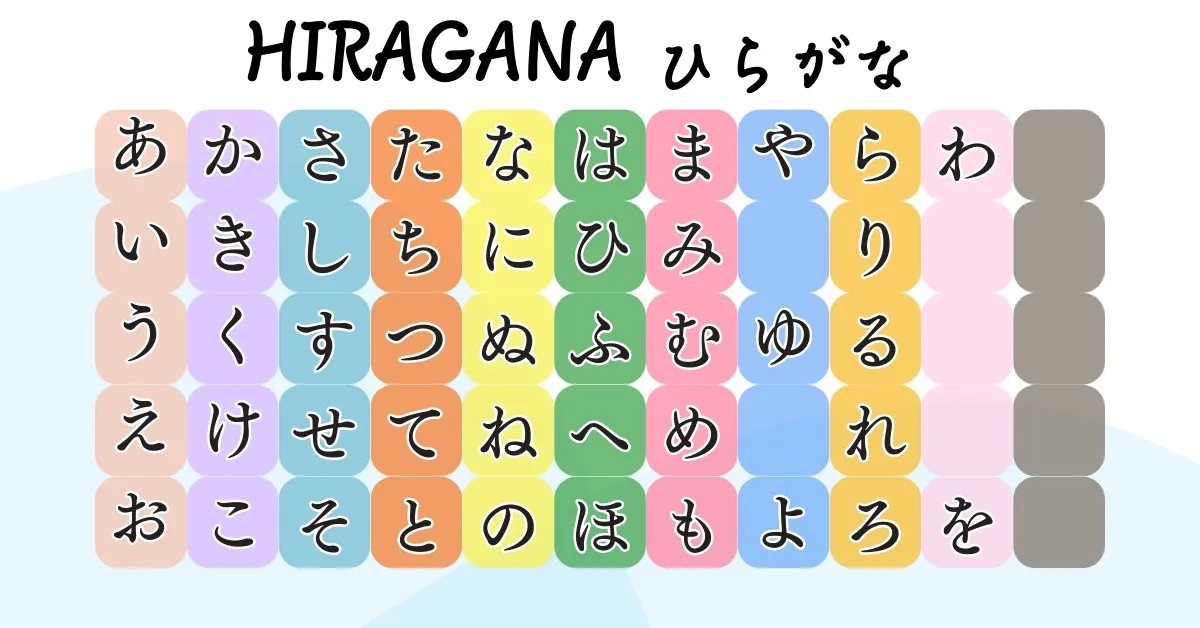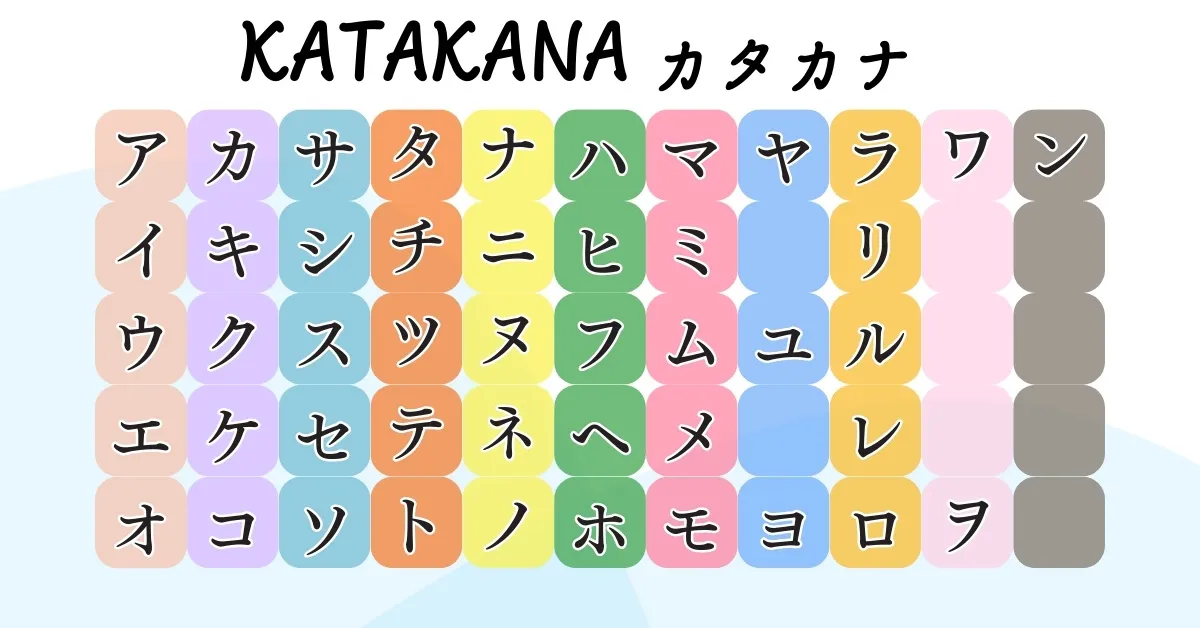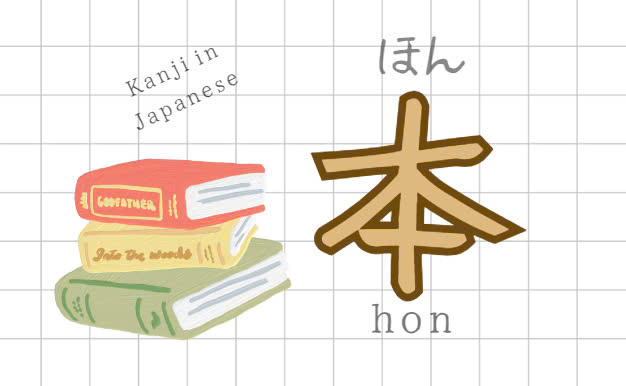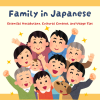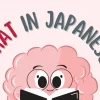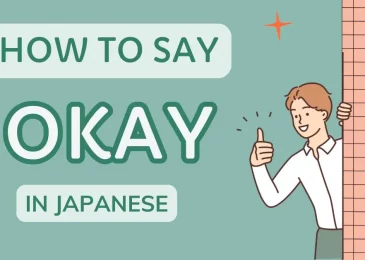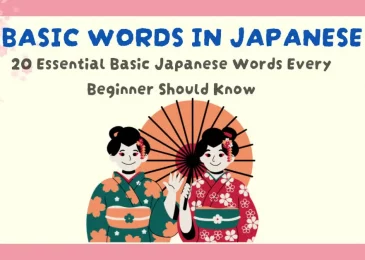- What is the Japanese Alphabet?
- The Japanese Alphabet: Hiragana and Katakana
- Why is Hiragana Important for Beginners?
- How Does Katakana Different from Hiragana?
- Kanji in Japanese Alphabet
- What are the Japanese Alphabet pronunciation tips for beginners?
- Long Vowels
- Double Consonants
- Silent or Short Vowels
- What is Romaji in the Japanese Alphabet?
- Which Tips for Learning Hiragana, Katakana, and Kanji?
- Conclusion
What is the Japanese Alphabet?
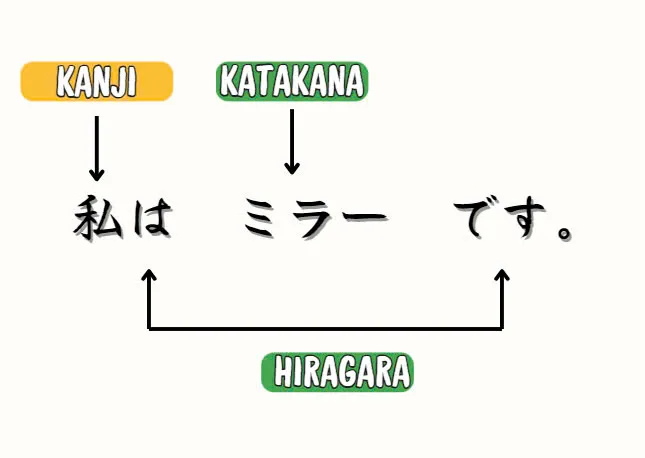
The Japanese Alphabet is made up of three essential types of characters: Hiragana, Katakana, and Kanji. Each of these character sets plays a unique and important role in the language, helping to form the foundation of the Japanese Alphabet writing system.
Hiragana and Katakana are both phonetic scripts, used for different purposes. Hiragana is used for native words, while Katakana is used for foreign words and names.
Kanji, on the other hand, consists of characters borrowed from Chinese and represents entire concepts or ideas, adding depth and richness to the language.
Together, these three types of characters create a writing system that allows for a highly nuanced and flexible way to communicate, combining simplicity with complexity in a way that reflects the beauty and precision of the Japanese Alphabet.
The Japanese Alphabet: Hiragana and Katakana
Hiragana is the core phonetic script in the Japanese Alphabet, with 46 base characters that represent syllables, unlike English letters that represent single sounds. Each character corresponds to a specific sound, making Hiragana essential for native Japanese words, grammar particles, and verb conjugations.
Why is Hiragana – Japanese Alphabet Important for Beginners?
Hiragana is the first script beginners learn in the Japanese Alphabet because it represents the basic sounds of the language. It is essential for reading, writing, and understanding grammar, as it is used for native vocabulary and verbs.
Mastering Hiragana helps learners with pronunciation and forms the foundation for more complex writing systems like Kanji and Katakana. Hiragana also clarifies pronunciation in Kanji, making it easier to read and understand texts. In short, learning Hiragana is crucial for building a solid base in Japanese and progressing in language skills.
The Difference of Japanese Alphabets: Katakana and Hiragana
Katakana is also a phonetic script in the Japanese Alphabet, but it has a different purpose. It’s mainly used for foreign words, names, and emphasis. While Hiragana is more common in everyday writing, Katakana helps set apart words borrowed from other languages, making them easier to recognize.
For example, when you see words like “computer” (コンピュータ), “coffee” (コーヒー), or the names of foreign countries, these words are written in Katakana to distinguish them from the rest of the Japanese vocabulary.
Kanji in Japanese Alphabet
Kanji is often considered the most challenging aspect of the Japanese Alphabet. Unlike Hiragana and Katakana, which are phonetic scripts, Kanji represents entire concepts and ideas. Each character can have multiple readings and meanings, making it more complex to learn.
For example, the Kanji 生 can mean “life”, “birth” or “student” depending on the context, and it can be read as “sei” “shou” or “i” in different words. The Kanji 本 can mean “book” and it can be read as “hon”. Kanji is an integral part of the Japanese Alphabet, enabling a deeper understanding of vocabulary and expression.
In addition to these general uses, Kanji also plays a key role in the Japanese Alphabet’s number system. For example, 一 represents the number “one” 十 means “ten” and 百 means “hundred”. Larger numbers like 千 (thousand) and 万 (ten thousand) also use Kanji. Kanji characters are integral to expressing numbers in Japanese, particularly in formal writing or traditional contexts.
Mastering Kanji requires memorizing both the meaning and pronunciation of each character, which is hard for beginners. But, knowing Kanji allows for deeper understanding and more nuanced expression, meaning of vocabulary in Japanese, unlocking the mastering of the Japanese language.
What are the Japanese Alphabet pronunciation tips for beginners?
Palatalized Sounds
Palatalized Sounds are sounds that combine a consonant with ya, yu or yo (such as きゃ (kya), きゅ (kyu), or きょ (kyo) ) to create a more complex syllable. These sounds require adding a small や (ya), ゆ (yu), or よ (yo) character after a consonant syllable, often written as a smaller kana character.
Semi-Voiced Sounds
Semi-voiced sounds are made by adding a small circle (°) to the は (ha) row of kana, such as ぱ (pa), ぴ (pi), ぷ (pu), ぺ (pe), and ぽ (po). This circle indicates a lighter, semi-voiced pronunciation distinct from fully voiced sounds.
Voiced Sounds
Voiced Sounds refer to kana that carry a voiced pronunciation. Adding a small double quote mark (゛), or dakuten, to certain kana, such as が (ga), ざ (za), だ (da), and ば (ba), creates these sounds and changes them from unvoiced to voiced.
The “N” Sound – ん
The sound represented by “ん” (n) is unique because it’s the only consonant that can stand alone in Japanese kana. It appears in various contexts, often influencing the pronunciation of following sounds.
Long Vowels
Long vowels can change word meanings, so correct pronunciation is important.
In Hiragana, holding the vowel sound for an extra beat creates long vowels. This often involves adding an extra vowel kana. Let’s use “おばあさん” as an example.
- おばさん (oba-san) – This means “aunt” or can refer to a middle-aged woman.
- おばあさん (obaa-san) – This means “grandmother.”
In the second example, the extra “あ” extends the vowel sound, making it a long vowel. Mispronouncing it as “おばさん” instead of “おばあさん” could lead to misunderstandings, as you’re referring to an aunt instead of a grandmother. This illustrates why paying attention to long vowels is crucial in Japanese.
And, in the Katakana alphabet, long vowels are created by adding a “ー” symbol.
- ビル (biru) – This means “building.”
- ビール (biiru) – This means “beer.”
In the second example, the long vowel is indicated by “ー,” which extends the “i” sound in katakana. So, saying ビル instead of ビール would change the meaning from “beer” to “building.”
Long vowels can change word meanings, so correct pronunciation is important.
Double Consonants
Represented by a small “つ” (っ), called sokuon, double consonants in Japanese create a slight pause or emphasis on the following consonant. This appears in words like “さっか” (sakka, meaning “author”).
Silent or Short Vowels
In Japanese, certain vowels may become nearly silent or extremely short, especially in fast or casual speech. This often happens in sequences like “です” or “ます” where the “u” sound can become very faint.
What is Romaji in the Japanese Alphabet?
Romaji is the Romanized version of the Japanese Alphabet, using the Latin alphabet to represent the sounds of Japanese words. It is primarily used by non-Japanese speakers and beginners to learn the pronunciation of Japanese without having to initially memorize the complex writing systems of Hiragana, Katakana, and Kanji.
Romaji makes Japanese accessible to those unfamiliar with the traditional scripts, as it offers a familiar alphabet to read and understand basic Japanese words and phrases. However, native speakers do not commonly use Romaji as they typically rely on Hiragana, Katakana, and Kanji.
The word “さくら” which means “cherry blossom”. In Romaji, it is written using the Latin alphabet as “sakura” which makes it easier for non-Japanese speakers to pronounce correctly.
Despite this, Romaji serves an important role in language learning tools, textbooks, and digital platforms, providing a bridge for learners to start their journey into the full Japanese writing system. It helps learners focus on mastering pronunciation and listening skills before tackling the intricacies of the traditional scripts.
Which Tips for Learning Japanese Alphabet?
Learning the Japanese Alphabet writing systems: Hiragana, Katakana, and Kanji, can be a challenge, but with the right methods, you’ll improve steadily.
Practice Writing Daily
Writing each character by hand helps strengthen your memory and recognition. Start with basic Hiragana and Katakana, then move on to Kanji. The more you practice, the more natural it becomes.
Use Flashcards

Visual aids like flashcards are a great way to test your memory. Apps like MochiKanji offer a systematic approach to learning Kanji, complete with digital flashcards that reinforce your knowledge daily.
Use Stories to Remember Kanji
For Kanji, creating stories or pictures that match the meaning of each character can make it easier to remember. For example, the Kanji 木 (tree) looks like a tree, so you can imagine it as a simple tree shape. These visual associations help you recall the characters more easily.
Conclusion
Learning the Japanese alphabet can seem tricky at first, but it gets easier as you go along. The journey begins with Hiragana, which is the most basic and essential script. Once you’re comfortable with Hiragana, learning Katakana will help you read words borrowed from other languages, like English. Finally, Kanji, that represents words or ideas, will deepen your understanding of the language.
By practicing regularly, these three scripts will start to feel more familiar, and before you know it, you’ll be able to read and write in Japanese with confidence. Learning these scripts is the key to unlocking a deeper understanding of the language, and it can be a fun and rewarding experience as you make progress.

